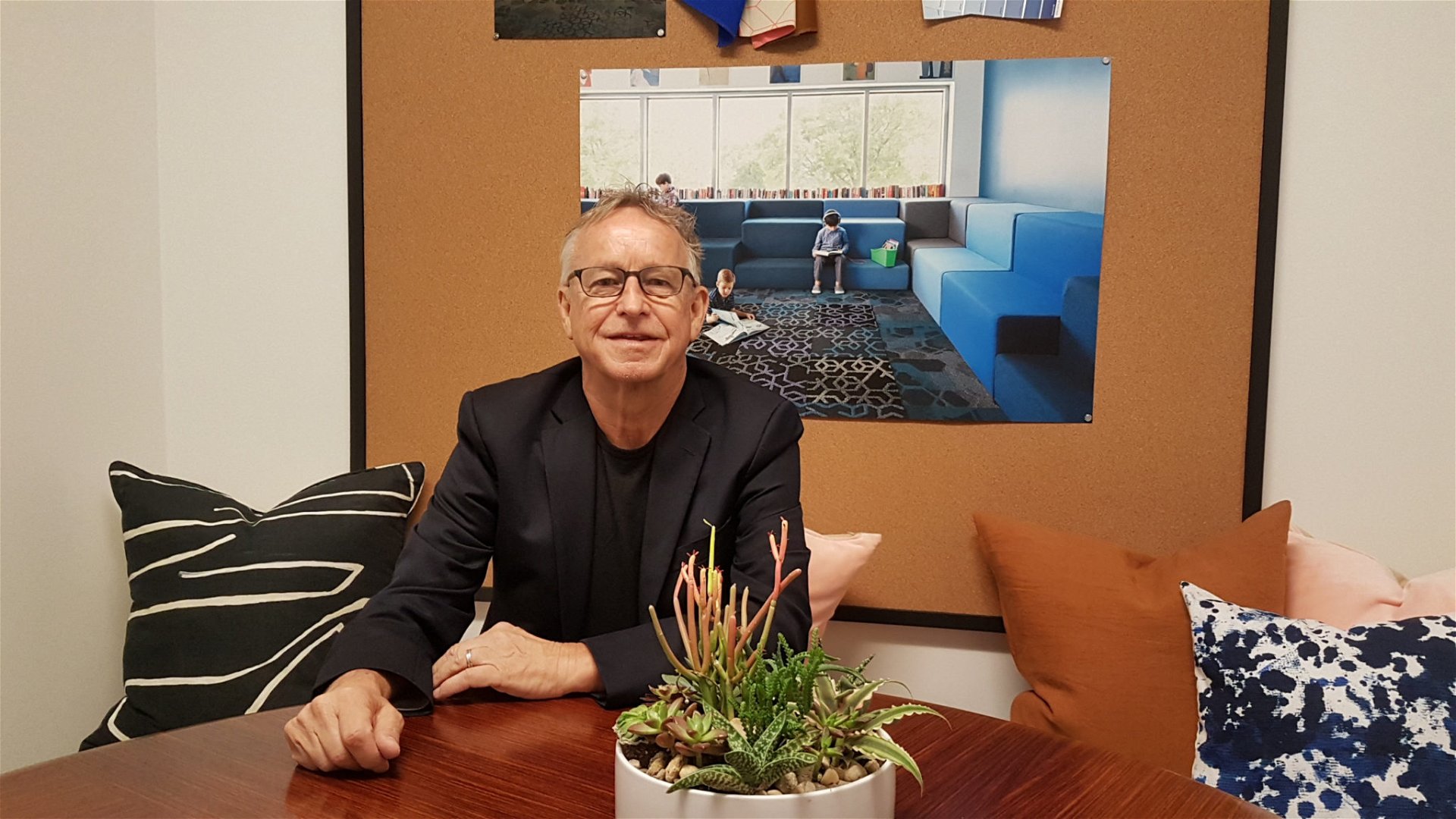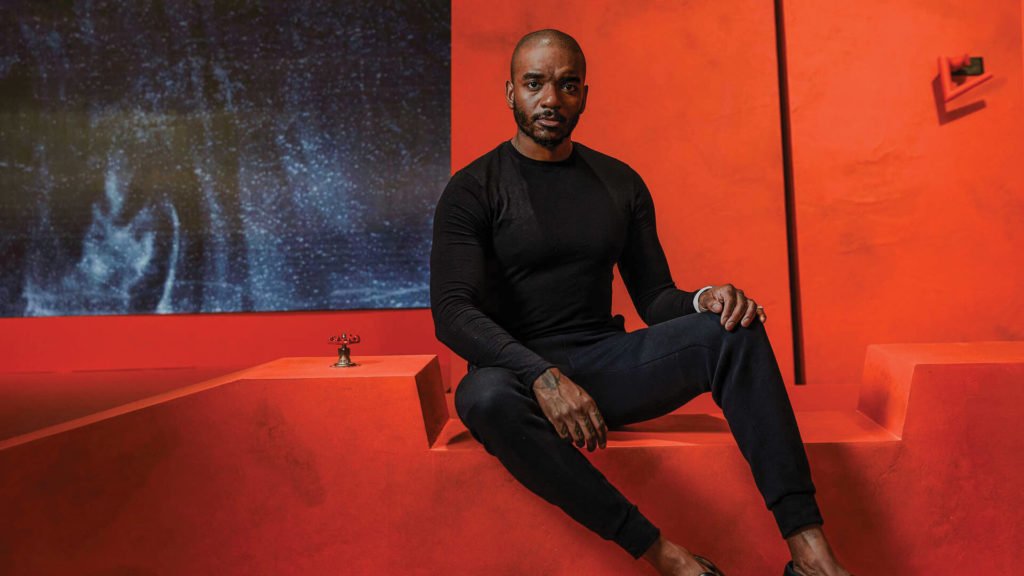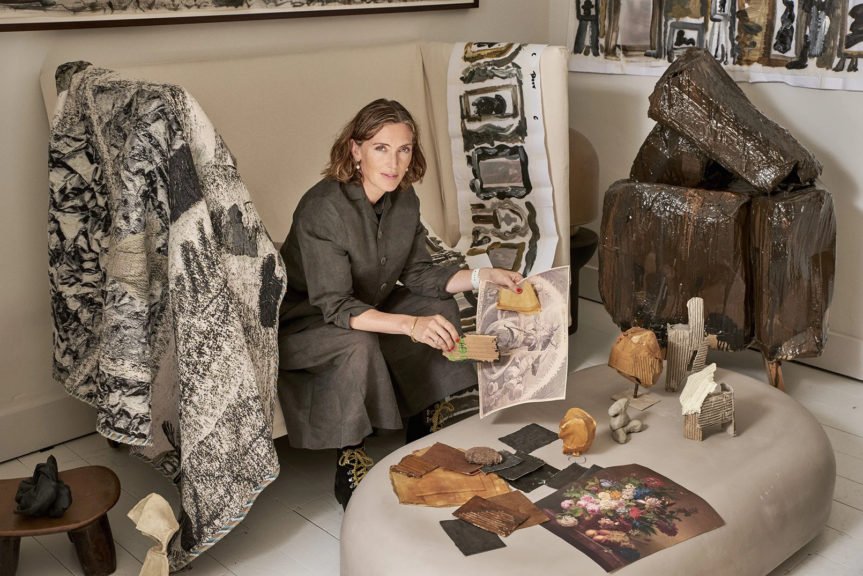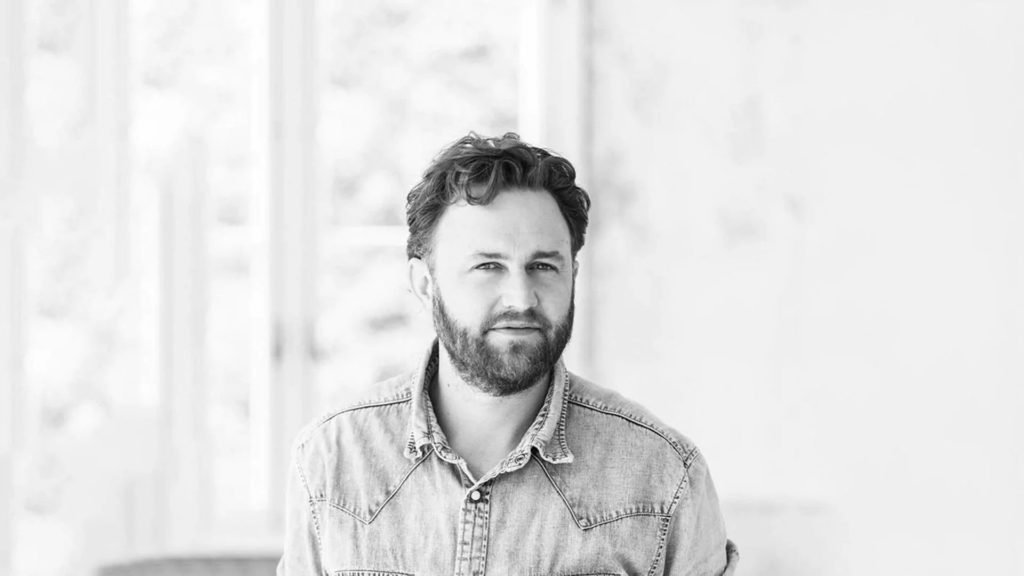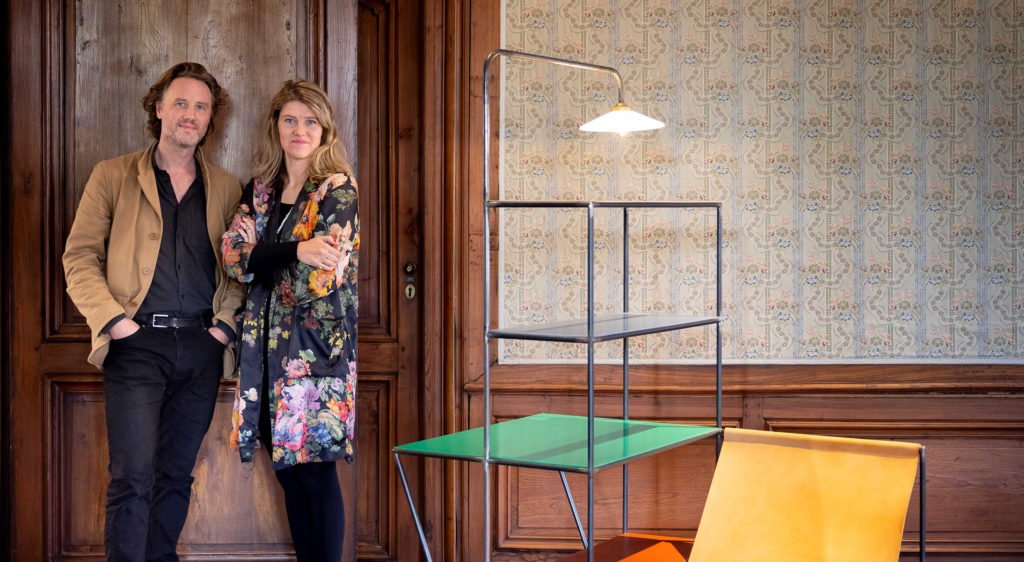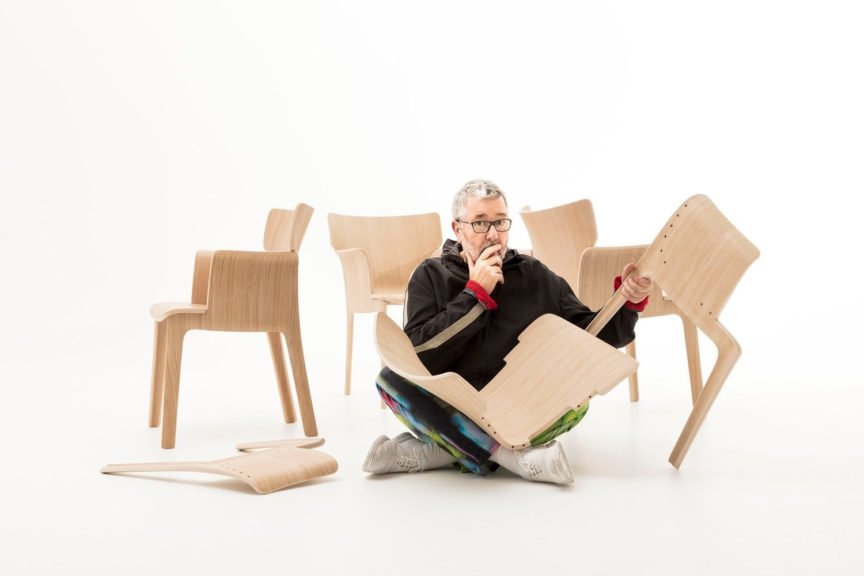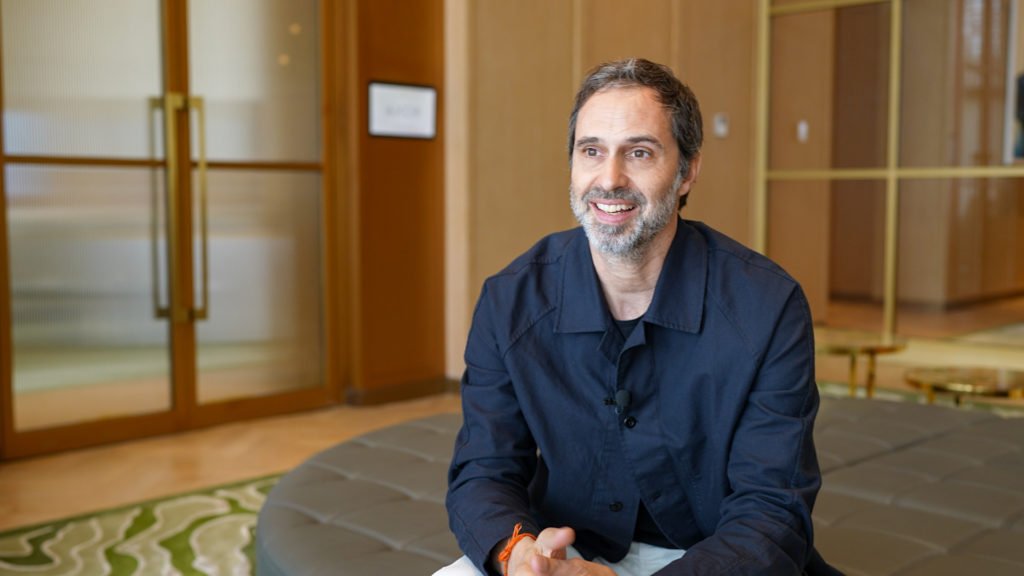To most people, particularly those in the Middle East, biophilic design is a recent trend. But to David Oakey, it has been the defining theme of his life’s work. His reputation as a pioneer in nature-inspired carpet design is preceded only by his long-time advocacy of biophilic design and biomimicry. David is the founder of Pond Studios and an exclusive designer for Interface and has carved a name for himself designing award-winning carpet collections, inspired by nature and driven by sustainability.
“Everything we find in nature is solar-powered, produces no waste and relies on collaboration with other living or organic elements to thrive. These are features I want our products to have.”
– David Oakey, Founder of Pond Studios
At NeoCon 2018, we managed to catch David at the Interface showroom for a chat about what he does best. Here are the highlights from our talk.
What has been the inspiration behind your latest products, especially your latest one?
We’ve been working with a lot of tech companies in the past decade or so; and in that time, we’ve seen the industry grow to mind-boggling heights. Some of the campuses and workspaces are incredible! What I’ve clearly noticed is a dedicated and sharp focus on hiring the best talent in the market. That involves job perks that include the freedom to work anywhere they like, and this relies on technology that lets people work remotely. As predicted by many, we’ve transitioned into a generation that has become accustomed to working within digital and intangible environments. Despite these digital trends, we’ve found that people still find a greater sense of comfort in being able to touch and feel. It should be no surprise that vinyl records are still a thing; it’s not just the sense of nostalgia that evokes a sense of comfort. The innate connection we have with nature and the physical world always surfaces at some point.
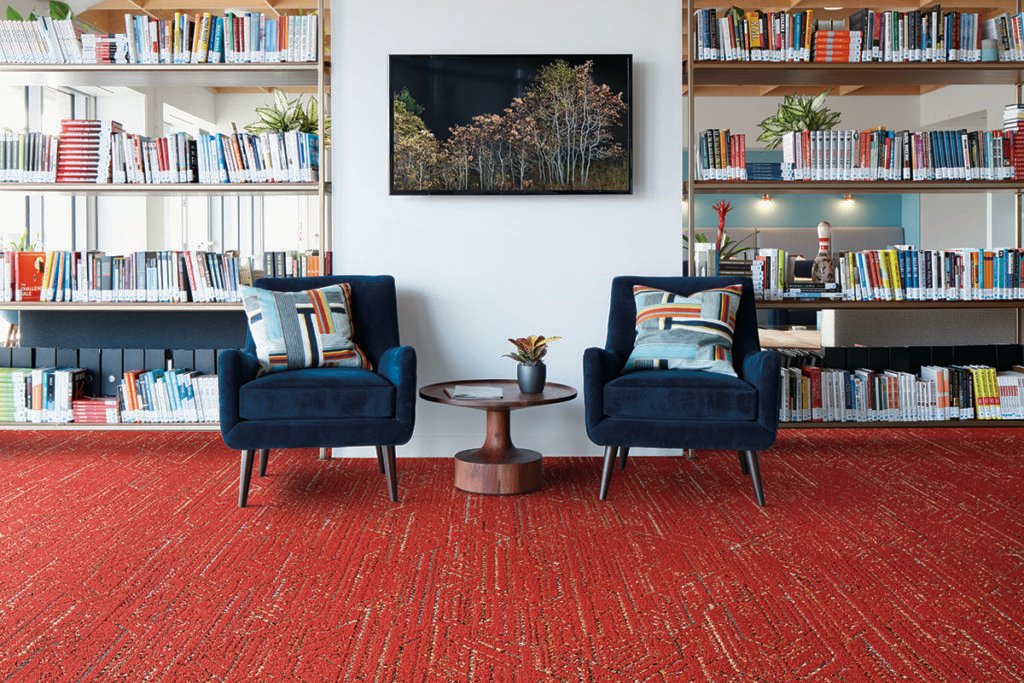
John Naisbitt, in his 1982 best seller Megatrends, explores the concept of High Tech/High Touch. He theorized that in a world of technology, people long for personal or human contact. And that’s the basis of the latest collection. If you look at products that people pick or prefer when it comes to decorating their homes, you will notice common elements that are found in nature, such as naturistic textures, warm or bright colours and non-linear shapes and patterns. That’s biophilic design subconsciously finding its way.
Another aspect of nature I take inspiration from is its complete, end-to-end sustainability. Everything we find in nature is solar-powered, produces zero waste and relies on collaboration with other living or organic elements to thrive. These are features I want our products to have.
Most people have a superficial understanding of what biophilic design means. What comes to mind when you hear these words?
Nature is random, but not necessarily in a chaotic way. And that’s what biophilic design embraces. You don’t find straight lines or right angles in nature; it’s full of curves and organic shapes. A single colour, say yellow, will be present in 100’s of different shades. Biophilic design isn’t just about bringing the outside in, it is about working with the environment to nurture that connection to nature.
Nature learns and adapts. You can find natural structures that are not only able to withstand strong winds but are able to gain strength from it. The diversity that we see in nature doesn’t disrupt any on-going process. That’s what should be integrated into new products. For example, in Europe, we’ve developed this new product that’s inspired by biophilic design, where each tile is different; yet, can be laid down anywhere without having to worry about continuity.
What have been your sources of inspiration?
A huge source of inspiration for me, in fact a turning point, has been Janine Benyus and her book Biomimicry: Innovation Inspired by Nature. But besides nature, people have also been a great influence. Involving professionals from different fields allows designers to draw on expertise from a wide range of sources. I try to learn from everything I see and feel. Even taking a stroll outdoors can strike an idea.
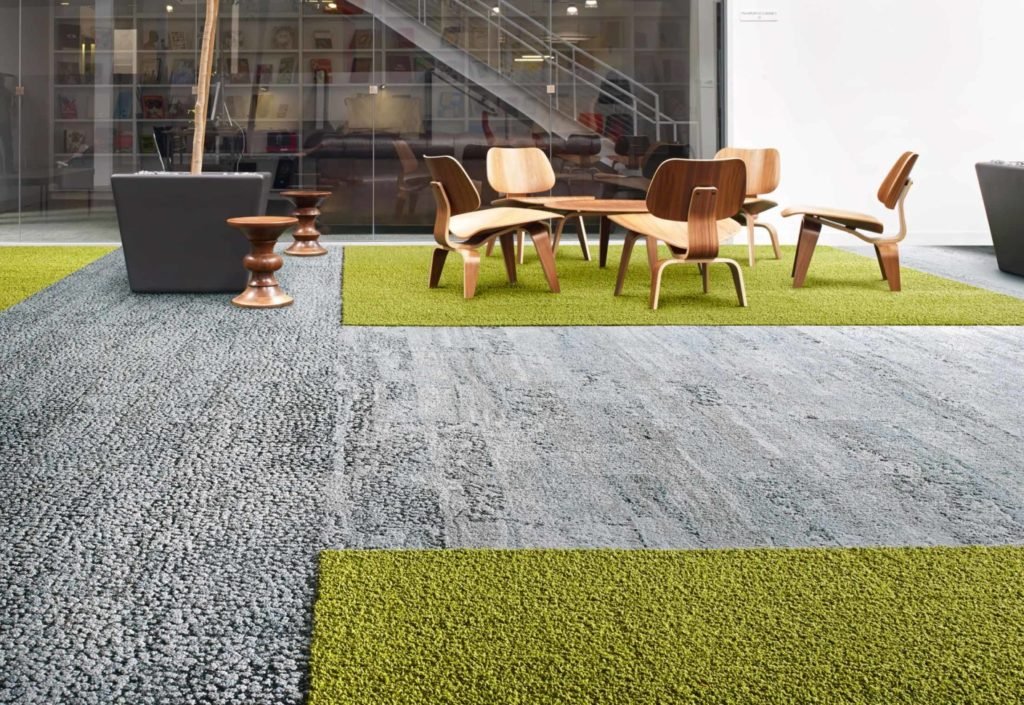
What does the future look like? How will people tie in technology, sustainability and biophilia?
I believe technology will be our savior. I’m an optimist that way. We’re making progress, and we’ll reach a point where the boundary between technology and nature has blurred to a point we are comfortable with. That’s what an ideal future and working environment should be – one where digital technology is actively a part of our lives. Yet, we as humans don’t feel disconnected from the natural world.
There are already products in the market that are mimicking nature in interesting ways – lighting systems that adjust lighting depending on location or time of day and patterns that change with the season; slowly but steadily. But like I said before, we need to scale these up to entire communities designed to embrace diversity. For example, a well-planned city or community doesn’t have to have separate residential, business or recreational areas. That’s not how nature works. But evolution takes time and so will this type of progress.
What are some of the challenges in producing these types of products?
Machines used in factories or assembly lines are programmed to perform repetitive tasks. They’re not designed to handle ambiguity or large amounts of complexity in their process. For starters, we must design and program our tools to handle the diversity I speak of; right now, producing non-linear and organic shapes is not easy.
But we have made progress, the most promising being 3D Printing. It’s the closest we have to a natural production process – efficient and with zero waste. Furthermore, our tools and technologies will have to learn and adapt to produce products that feel natural. But at its current level, 3D printing at large speeds and scale is a challenge and not commercially viable.
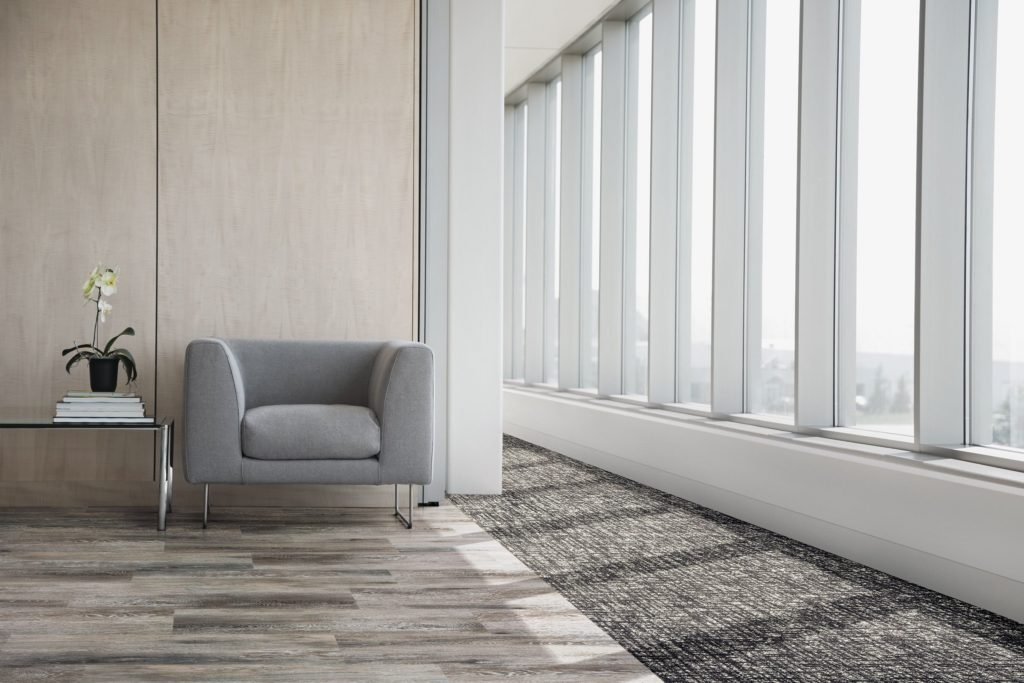
What products or aspects of your work are you most proud of?
I’m proud of everything we’ve designed at Pond Studios and with Interface 🙂
But one aspect of our designs, which I think people take for granted, is the recycled nylon content. Around 10 to 15 years ago, scientists said recycling nylon was impossible. Today, we’ve got 100% recycled products made from old fishing nets, clothes, bags and other stuff. It has become the norm with us and Interface. It’s a pretty big achievement if you think about, all thanks to the technology available today and Interface’s drive towards sustainability. And now other industries are starting to benefit from this development.

